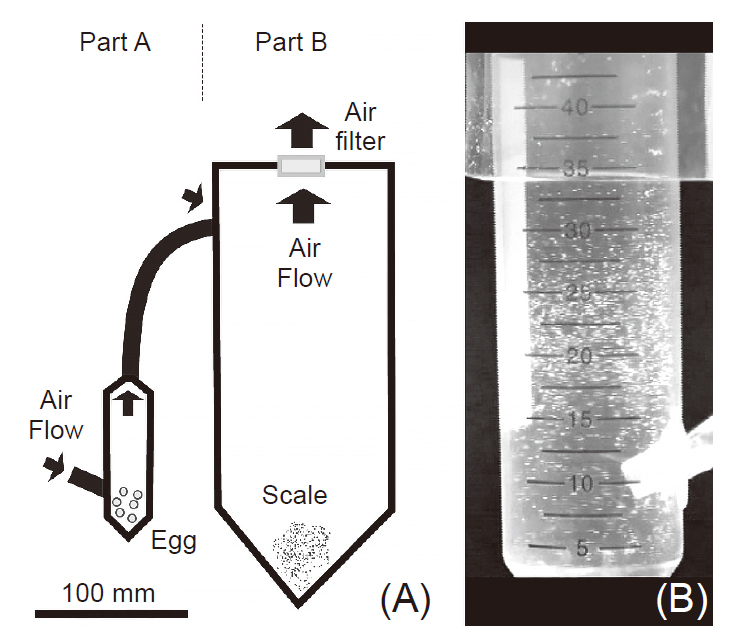All issues

Author:Bei-Chen Hsiu, Jih-Zu Yu, Yew-Jen Dong, Feng-Chyi Lin, and Ming-Yao Chiang*
Abstract:
Almond moth [Cadra cautella (Walker)] eggs are a critical type of factitious prey for beneficial insect enemy species. However, the residual adhesive scales on the eggs create commercial inconveniences. In previous attempts to solve these problems, conventional sieving device could not completely detach the scales from the moth eggs, and increased equipment size. This study used conventional sieving device and cyclonic separation to detach almond moth eggs from the adhesive scales. There were no significant differences were observed for the broken eggs and the hatch rate between the two separation methods. However, the residual scale per moth egg and egg lost rate differed significantly from cyclonic separation method and conventional sieving device (0.1 piece ± 0.0 piece vs. 4.7 piece ± 0.2 piece; 0.3% ± 0.3% vs. 10.5% ± 1.0%). This cyclonic separation method using a simple device is efficient for egg-scale detachment and thus has potential for use in almond moth rearing.
Key words:Cyclonic separation, Almond moth [Cadra cautella (Walker)], Egg, Scale
Download:![]() PDF Links
PDF Links
- 1. Development of Tractor-Mounted Seedling Transplanter for Sweet Potato
- 2. Synergistic Effect of Additional Gas on the Toxicity of Phosphine to Sitophilus oryzae and Sitophilus zeamais (Coleoptera: Dryophthoridae)
- 3. Effects of Temperature and Solar Radiation on Growth Traits and Plant Elements in Purple Leafy Sweet Potato
 Submit your manuscript
Submit your manuscript
 Guide for authors
Guide for authors